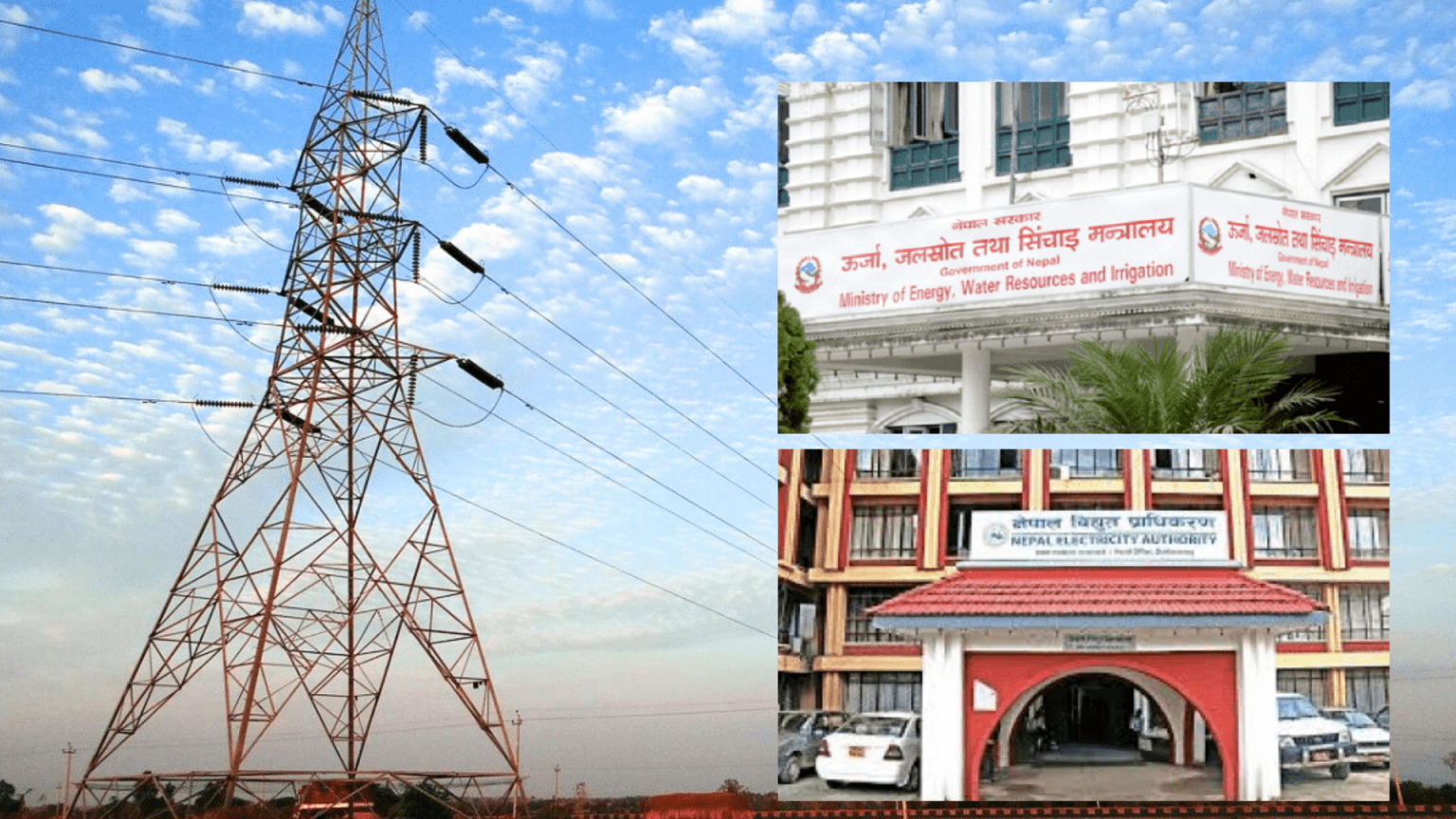

KATHAMDNU : The installed capacity of the country’s national transmission system has now reached 2600 megawatts. According to the projection of Nepal Electricity Authority, this capacity will increase to 3 thousand megawatts by the end of the current fiscal year (2079/80) due to the addition of electricity from the hydroelectric project which is in the process of completion. Nepal’s electricity has started to be exported to India’s competitive market since last year when more electricity was produced than the demand during the monsoon. This is a matter of happiness for the country and the promoters who invest in hydropower. However, as the electricity capacity of the country continues to increase, the government’s attention does not seem to be focused on increasing domestic consumption. Compared to electricity production, the increase in domestic electricity consumption is very low.
In the current situation and future roadmap (white paper) of the energy sector issued by the Ministry of Energy, Water Resources and Irrigation on 25 Baisakh 2075, the goal is to reach 700 units of electricity consumption per capita within 5 years and 1500 units within 10 years. The period of 5 years determined by the white paper is going to expire next Baisakh. However, according to the data up to the last fiscal year (2078/79), only half of the electricity consumption growth target has reached 351 units per capita.
If the network of transmission and distribution line system is not increased rapidly to provide electricity to industrial and commercial customers according to demand, then it seems unlikely that the target of reaching 1500 units of electricity consumption per person within the remaining 5 years will be met.
According to the Electricity Authority, the current high demand for electricity is around 1700 megawatts. Due to the fact that the internal electricity consumption is not close to the connected capacity, the risk of wasting the electricity produced by the hydroelectric power plant at its maximum capacity during the monsoon is increasing every year. The environment for exporting the electricity that was not used during the monsoon to the Indian market is becoming more comfortable. However, every year, as the installed capacity of hydroelectric power is increasing, the amount of wasted electricity is also increasing.
The situation of power wastage during monsoon has increased the investment risk of private energy producers. Since hundreds of hydropower projects are under construction to increase electricity production, long-term plans to increase domestic electricity consumption have not been brought to bear, and the private energy producers are saddened by the fact that the power is being wasted during monsoons.
Ganesh Karki, Vice President of Independent Energy Producers Association of Nepal (IPAN), says that domestic electricity consumption has not increased rapidly because the government has not worked on the development and expansion of the transmission and distribution system.
“The government has no concrete plan to increase electricity consumption,” he says. “If we had already planned to increase domestic consumption while increasing electricity production and invested in electrical infrastructure, today billions of electricity would not have been wasted during the monsoon.” He says that the private power producers who invest in hydropower are directly affected by the failure to increase domestic electricity consumption.
Due to the fact that all the generated electricity could not be consumed, more than 2 billion rupees of income was lost when more than 3 dozen private investment hydropower plants lost electricity during the last year monsoon. This year too, since more than 2 dozen hydropower projects have been added to the transmission system, the private sector is worried that more electricity will be wasted than last year.
Madhu Bhetuwal, Joint Secretary and Spokesperson of the Ministry of Energy, Water Resources and Irrigation, says that since electricity production is increasing, every citizen should start from the kitchen of their home to increase internal consumption. He says that the ministry is preparing an action plan that includes short-term and long-term plans to increase internal electricity consumption to encourage citizens. “The ministry is making an action plan on what measures can be taken to increase electricity consumption,” he says, “It will be implemented after the draft of the action plan is prepared and approved by the Cabinet.”
According to him, who will be responsible for increasing electricity consumption will also be mentioned in the action plan. He says that the opinion and suggestions of the relevant agencies are being taken about the action plan brought by the ministry.
After getting the opinion/suggestions of the stakeholders, the draft action plan will be revised and taken to the Cabinet, according to Vetwal. He says that the ministry has come to the understanding that every level of the government, starting from an individual, should contribute to the increase in electricity consumption from their own side.
Executive Director of Nepal Electricity Authority Kulman Ghising says that although the government target has not been met, the domestic electricity consumption is increasing by 20 percent annually. It is not that electricity consumption in the country is not increasing. Our data shows that electricity consumption is increasing by around 20 percent annually,” he says. “This is very good. If we compare it with the consumption of 6 years ago, this quantity is double.
He says that when he came to the leadership of the Electricity Authority 6 years ago, the annual electricity consumption was 4 billion units, but now it has increased to close to 10 billion units. Ghising claims that while electricity consumption in developed countries increases only by 5 percent annually, it is better for Nepal’s consumption to increase by 20 percent annually. He said that the graph of electricity consumption will go up even as the development work of the infrastructure sector increases. Ghising says that the increase in electricity consumption depends on the country’s economy. “The higher the economy of Nepal goes, the higher the electricity consumption will be,” he says, “the government’s policy also determines the electricity consumption situation.”
Industry does not have enough electricity
If sufficient electricity can be provided to the domestic industry, the consumption can be increased immediately by about 1,000 megawatts. After a long wait after the transmission system infrastructure was built, Hongxi Cement got electricity as per demand. Although the authority has approved the load of electricity demand of some industries, due to the lack of electrical infrastructure, electricity has not been supplied to the cement industry, yarn industry, and steel industry.
These industries can get electricity tomorrow if the authority gives them electricity today. However, due to the lack of electricity supply infrastructure, the authority has not been able to provide electricity to the industry as per the demand.
Industrialists say that if the authority gives electricity to industries that consume more electricity like iron, cement, rods, and yarn at Rs 4 per unit, the electricity consumption can be increased by at least 1,000 megawatts. At present, the boilers of the industry are running on coal, diesel and chaff. Chaff to run the boiler is not easily available. The price of diesel has skyrocketed. In this situation, now is the right time to convert industrial boilers to electric ones.
Industrialists claim that if there is an environment to convert boilers to electric ones, consumption will increase by 500 megawatts immediately. hey demand that the government should create an environment to replace the boilers from coal, diesel and chaff consumption and convert them to electric ones by introducing a policy of providing electricity at a low tariff rate for 5 to 10 years and encourage them to increase consumption.
Co-Secretary Vetwal says that in order to discourage the consumption of petroleum, from providing concessional loans to converting the boilers of industries and hotels into electric ones, the matter of making the electricity tariffs cheaper by giving concessions is going to be included in the action plan of the ministry.
According to him, since the action plan proposes to maintain a low tariff rate instead of charging higher tariffs to those who consume more electricity, it will be easy for industries to convert to electric completely. New industries cannot be opened without ensuring that they will get the facility of electricity. If the Electricity Authority ensures access to electricity, the number of new industries will increase. However, due to the problem of transmission and distribution system, the industries are not able to get electricity according to the demand.
According to IPAN Vice President Karki, the government should make a long-term plan and increase investment in the construction of transmission and distribution system infrastructure to increase the electricity consumption of the industry. He claims that electricity consumption will increase even if the tariff rate of electricity given to industry is reduced and adjusted. Increase in domestic consumption contributes more to the country’s economy than exports. For that, the government should make short-term and long-term plans and invest to create an environment in which electricity consumption will increase,” he says.
On the other hand, the executive director of the authority, Ghising, says that a lot of work has been done to increase the electricity consumption of industrial customers. According to him, the Electricity Authority is working on the construction and upgrading of electrical structures in the industrial sector to increase the consumption by providing electricity to the industry as per the demand. He argues that because the authority is expanding the electrical infrastructure, many industries are now coming. He claims that this will further increase the amount of domestic electricity consumption.
The government makes various announcements through the budget every year to increase the electricity consumption rate after the end of load shedding. However, every time the announcement made in the budget is not implemented until the end of the fiscal year.
If the domestic electricity consumption can be increased in proportion to the electricity production, then the country’s economy will become more active and industries and businesses will flourish, as well as employment opportunities will be created within the country. However, due to the lack of infrastructure, domestic electricity consumption cannot be increased, so there is a compelling situation where we have to go to the option of exporting to neighboring countries.
Knowing that increasing internal consumption of Nepal’s electricity would be more beneficial than exporting it to neighboring countries, the Ministry of Energy and the Electricity Authority are currently preparing to increase the export of electricity during monsoon due to the lack of infrastructure.In order not to waste the investment in hydropower, the option of exporting electricity seems to be the best option for now.
Hydropower promoter Mohan Bikram Karki says that it is necessary to increase electricity consumption in the country, but it is not possible due to the problems of transmission and distribution system. He says that not only to increase the consumption of electricity in the monsoon, but also if the supply can be managed in the dry season according to the increased demand, the citizens will be able to consume electricity with confidence. “It is not just that more electricity should be consumed in monsoon,” he says, “We should create an environment that provides electricity equally to all categories of consumers in monsoon and winter.” There is no situation to increase consumption monsoon. He said that export is the first option to manage the electricity market, which cannot be consumed due to the problem of transmission and distribution system.
He says that the connected capacity is going to reach 3000 megawatts by next Asar, but due to the lack of electrical infrastructure, the high demand is only around 1700 megawatts, so for the time being Nepal’s electricity supply to India in the monsoon and taking it from India in the winter is the most appropriate way. Our current high demand is only around 1700 megawatts. Electricity demand during off-peak hours is still low. That is why this year we will give our electricity to India in monsoon and take it in the winter,” he says.
More investment in electrical infrastructure is required to increase electricity consumption
The lack of infrastructure of transmission and distribution system has now become the main obstacle to the increase in domestic electricity consumption. Currently, the current transmission and distribution system cannot handle all the loads of electricity produced and the electrical infrastructure under construction cannot be completed on time due to various reasons, and because the investment in electrical infrastructure cannot be increased as per the requirement, domestic electricity consumption has not been able to increase rapidly.
Suvarnadas Shrestha, chief executive officer of hydropower promoter and Swetaganga Hydropower Company, says that the network of transmission and distribution system should be improved to increase domestic electricity consumption. He emphasizes that by looking at the number of households in each area, according to the power consumption capacity, the capacity of the distribution transformer should be increased and arrangements should be made so that the consumers can consume maximum power. “In order to increase household consumption, the distribution system of every unit of place to place should be improved,” he says. “While adding the distribution transformer, the distribution line should also be upgraded so that it can handle the electrical load as per the demand.”
According to Shrestha, the authority should call for the upgrading of the wiring for the use of equipment that consumes more electricity, as the wiring done by him at the house of the household customer is only for lighting the lights. He also suggests that the authority should facilitate the upgrade of the meter of 5/6 ampere to 30 ampere. The Authority is regularly working on building and operating new transmission and distribution system structures and upgrading the existing structures. However, compared to electricity production, the structure of transmission and distribution system is less accessible. The authority has not been able to provide quality electricity even to the places where the transmission and distribution system has reached. This is the reason why there is a lack of transmission and distribution system infrastructure to consume all the electricity produced within the country.
Due to the fact that the existing infrastructure is not sufficient and the infrastructure under construction is also problematic due to various reasons, not all the electricity can be used during monsoon. According to Executive Director Ghisingh, there is a need for the Electricity Authority to increase investment in electrical infrastructure to further increase electricity consumption. He said that a large investment is needed in transmission and distribution lines and substations. He says that the authority is creating a blueprint for the necessary investment in the construction of electrical infrastructure to increase electricity consumption across the country.
A large part of the profit earned by the Electricity Authority in the last 5/6 years has been spent on the construction of the electrical infrastructure of the transmission and distribution system. If the authority had not made this investment, now there would have been a situation of having to force load shedding for 16 hours a day. Therefore, construction of transmission and distribution systems is as important as power generation. Therefore, more investment is needed in this sector,” he says.
He says that if the power generation is not reached to customer, it will be wasted. He says that the authority has made improvements to a large extent by investing in the construction of transmission and distribution system structures to prevent power wastage. There is a need to invest more in the infrastructure of high capacity transmission and distribution lines so that all the electricity produced is not wasted. The Electricity Authority is working on a plan to build a network of 400 KV and 220 KV transmission lines. However, a large investment is required to build a network of transmission lines.
There are also problems in place to place due to various reasons, which are already in the construction of the transmission lines. Ghising says that in order to increase the domestic electricity consumption, we are currently moving forward by acquiring land in the final phase of studies to build 20 substations, surrounding 220 kV transmission lines and underground 220 and 132 kV transmission lines in Kathmandu Valley alone.
He says that for the construction of this network of transmission lines alone, an investment equal to 60 billion rupees is needed in 5 years. He argues that if the electrical infrastructure can be built with this much investment, the electricity demand of the valley can be managed up to 3,500 megawatts.
Adjustment in tariff rate
The government has been promoting electric stoves and electric vehicles for a long time to increase domestic electricity consumption. However, consumers do not have faith in the weak electricity distribution system across the country including the valley. Although electric stoves are cheaper in terms of cost compared to imported gas, consumers have not gone for this option due to the fear that if they start using electric stoves in the kitchen from today, they will starve tomorrow. Some consumers are using gas even though they have an electric stove at home.
When the electricity produced in the country is wasted, even if it is only to increase the consumption during monsoon, the household consumers can be encouraged to use electrical appliances by reducing the electricity tariff. If the electricity tariff is reduced during the time of excess electricity production, there is a possibility that consumers will start using electric stoves instead of expensive imported gas. The use of appliances like refrigerators, ACs, coolers also increases. When the tariff rate is low, the use of electric vehicles also increases compared to petroleum vehicles.
It will replace imported petroleum and contribute significantly to reducing the country’s trade deficit. At the same time, the number of domestic and small scale industries will automatically increase by getting cheap electricity. Co-Secretary Vetwal says that the action plan to be brought by the Ministry of Energy will encourage household consumers to use electric stoves. “In order to increase the use of electric stoves, we are including the plan to make it cheaper by reducing the subsidy currently given on gas and giving concessions on the electricity tariff,” he says. It is thought that the number of people using electric stoves will also increase when the gas concession is given in the electricity tariff.
He says that since the consumers need quality electricity to replace the gas from the kitchen in the house, this issue will also be included in the action plan, realizing the need to improve the quality of the distribution system. After displacing gas and encouraging the use of electric stoves, the problem of power outages should not be allowed as soon as food is placed.
Therefore, we are including topics such as improvement of electricity transmission and distribution system, promotion of electric vehicles, construction of infrastructure of charging stations, discounts on the purchase of electrical equipment, reduction of concessions given on LPG and converting them into concessions on electricity tariffs, etc., he says. He says that since the Ministry of Energy alone cannot increase electricity consumption, there is a need to increase publicity to encourage household customers. Electric stoves are the only option to replace imported gas and prevent the outflow of billions of rupees and increase domestic electricity consumption. However, in order to use electric stoves in every house, the electricity authority should ensure sustainable and quality electricity.
IPAN vice president Karki says that the government and the electricity authority need to advertise in order to encourage citizens to consume electricity in order to avoid the situation of wasting electricity. “At the time when electricity is produced more, citizens should be encouraged to increase domestic consumption to replace imported gas,” he says. According to him, if the government cuts the subsidy on gas and encourages citizens to use electric stoves by giving discounts on electricity tariffs, consumption will automatically increase. He suggests that at the initial stage, the distribution system of an area should be improved and all the households there should be encouraged to use electric stoves.
He argues that if we encourage the use of electric stoves by improving the distribution system of large cities with high population density, consumption can be increased in the short term. He claims that electric stoves are the only option to increase domestic consumption by bringing a short-term plan to feed the existing distribution system. Ghising, executive director of the authority, says that if the government can increase the concessions on the use of electric vehicles and electric stoves, the graph of domestic electricity consumption will go up.
Promotion of electric vehicles
Electric vehicles are also a good option to increase domestic electricity consumption. By increasing the use of electric vehicles, the consumption of domestically produced clean energy can be increased as well as the import of imported petroleum fuel can be replaced. Along with this, it also contributes to meet the government’s goal of zero carbon emissions. Nowadays, 2-wheeled and 4-wheeled electric vehicles are seen plying on the road. Although the general public is realizing that the monthly expenses of electric vehicles are lower than petroleum vehicles, the number has not been increased due to the suspicion that it will not be possible to travel for long distances due to charging problems. However, by making a long-term plan and investing in the infrastructure of charging stations, domestic electricity consumption can be increased by increasing the number of electric vehicles.
Ghisingh, executive director of the authority, says that petroleum imports can be completely replaced when electric vehicles consume 25 billion rupees worth of electricity. He says that in terms of cost, electric vehicles are 15 times cheaper than petroleum vehicles, and if all vehicles are converted to electric vehicles and operated by charging, the annual petroleum import of 400 billion can be completely replaced. He says that the authority is investing in building the necessary infrastructure for charging stations to increase internal electricity consumption by promoting electric vehicles. He said that they are immediately providing electrical structures and transformers for charging stations built by the private sector.
He says that after the authority built 51 high-speed charging stations in various places across the country for the promotion of electric vehicles, now the private sector has also built more than 100 charging stations.
Hydropower promoter Shrestha says that in order to increase the internal consumption of electricity, for the promotion of electric vehicles, charging stations should be built in places where there are petrol pumps instead of allowing the opening of new petrol pumps. He says that if the number of charging stations is increased, the number of electric vehicles will increase and the electricity consumption will also increase.


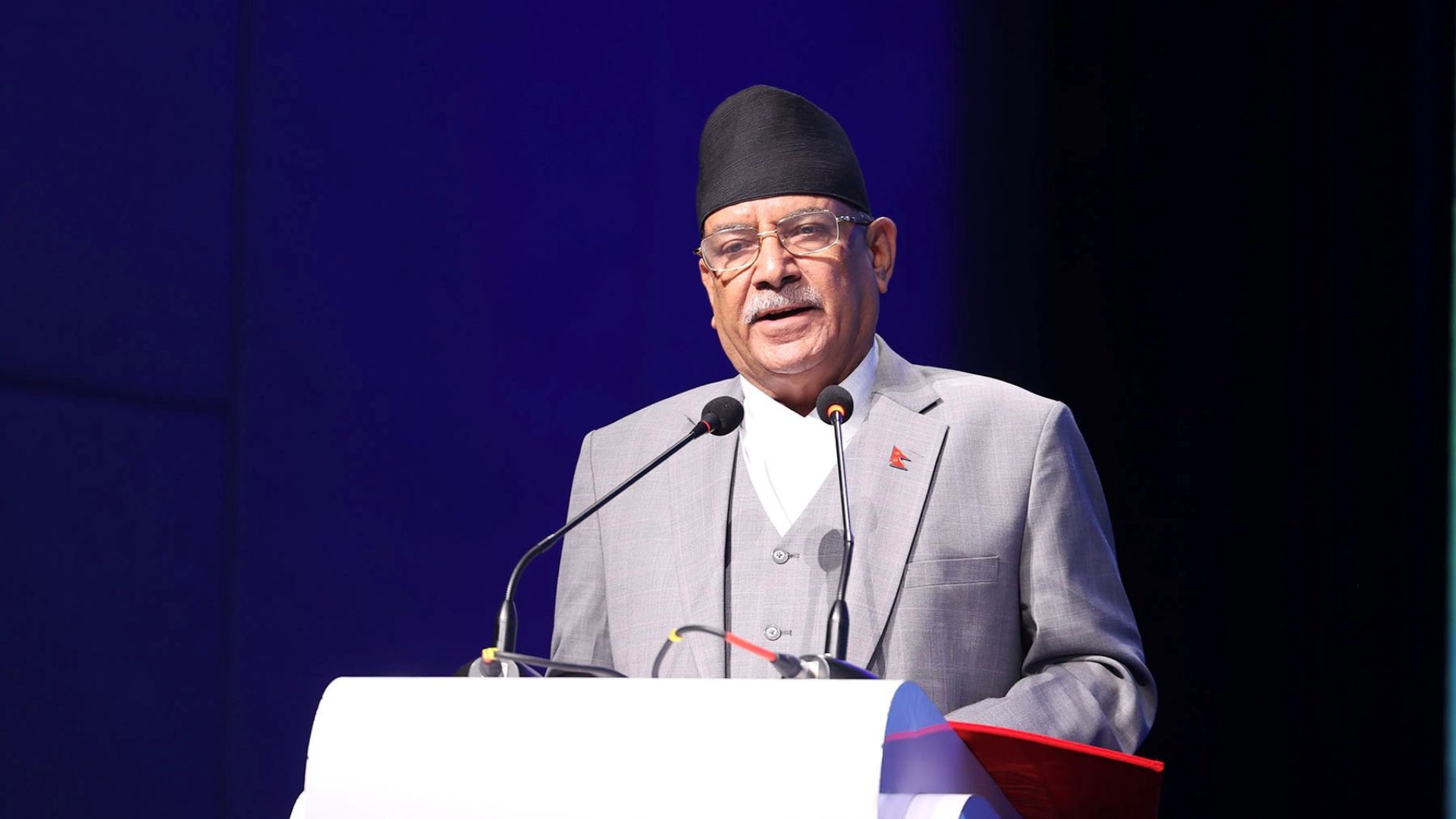
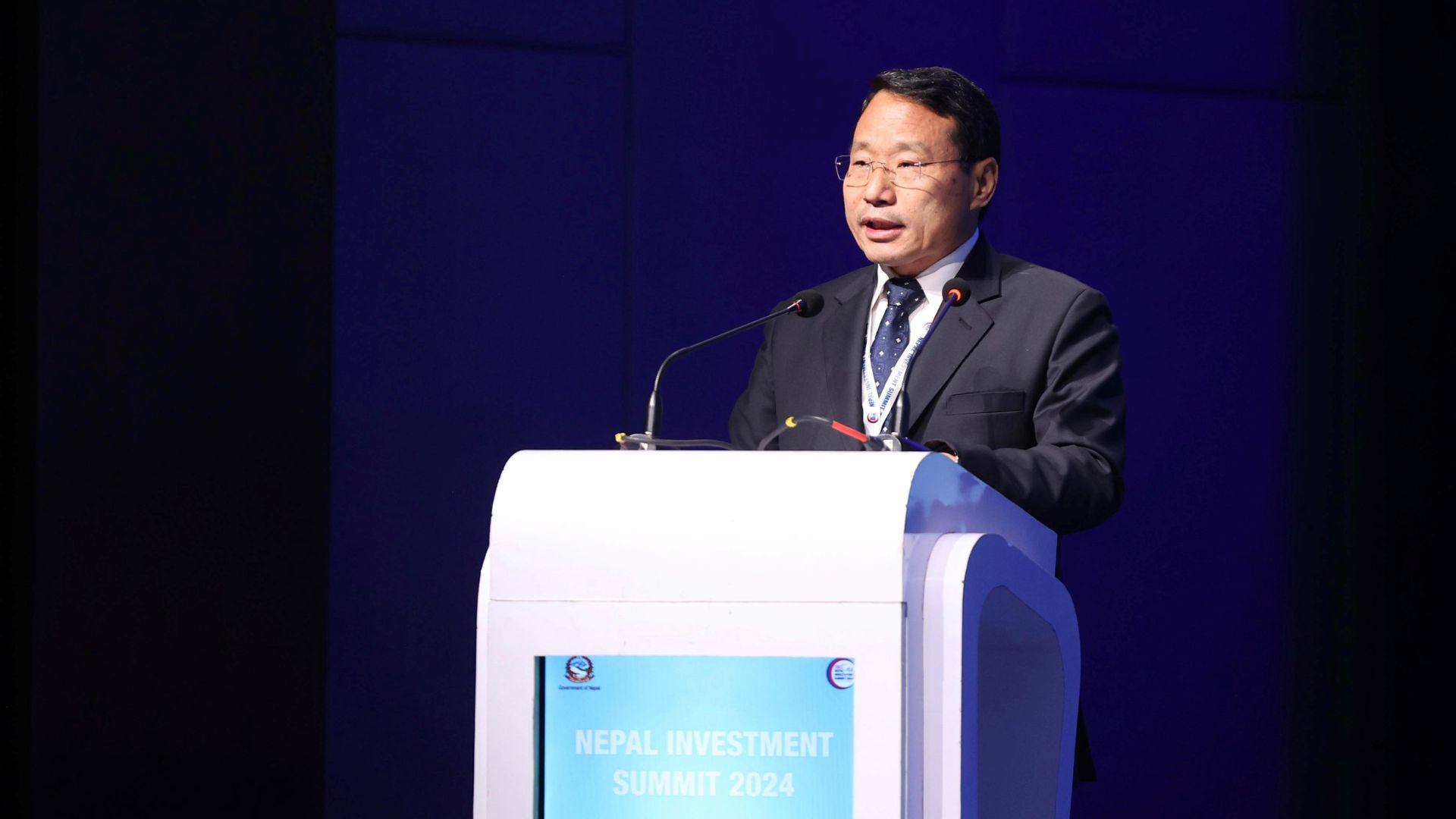
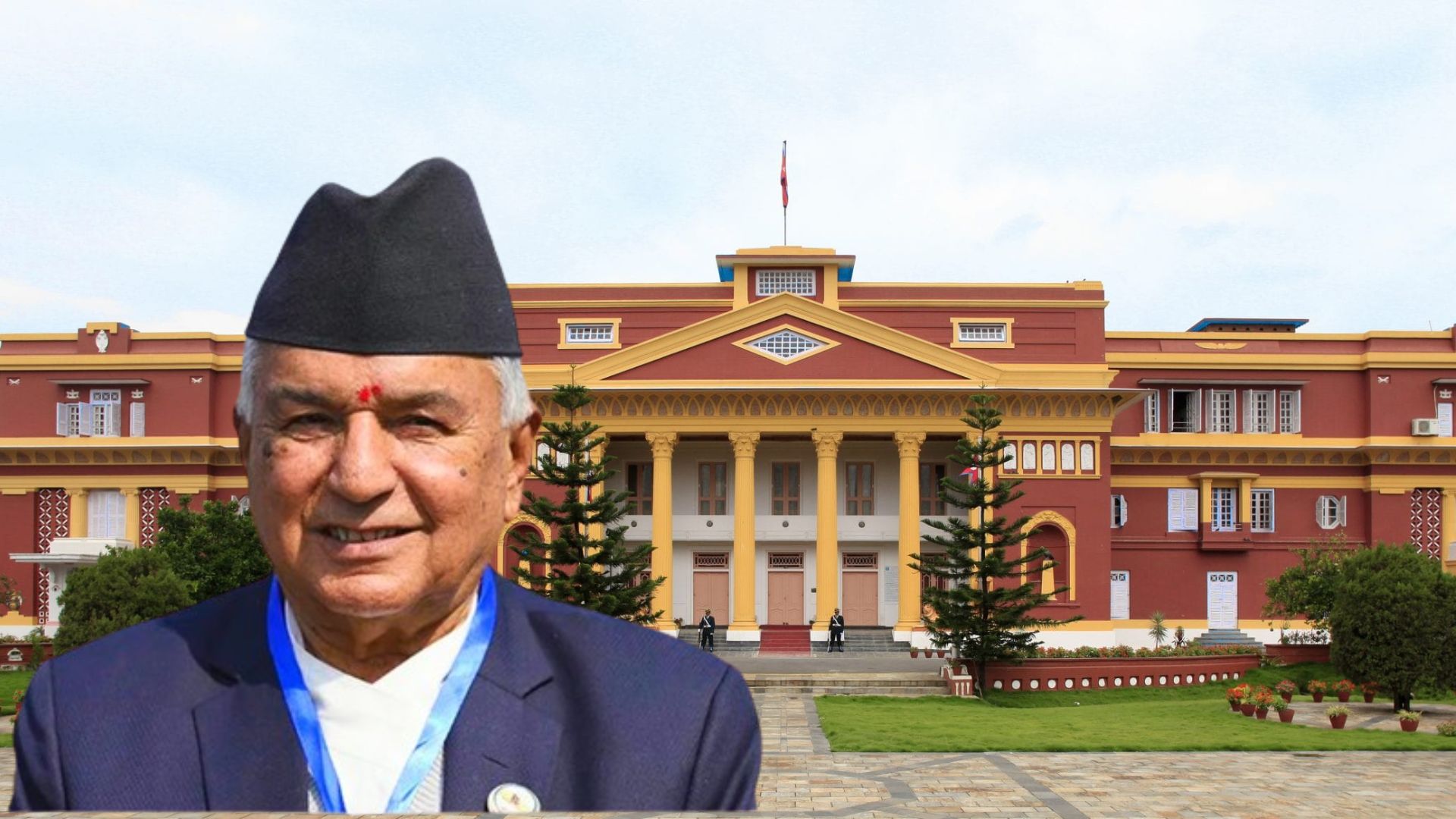

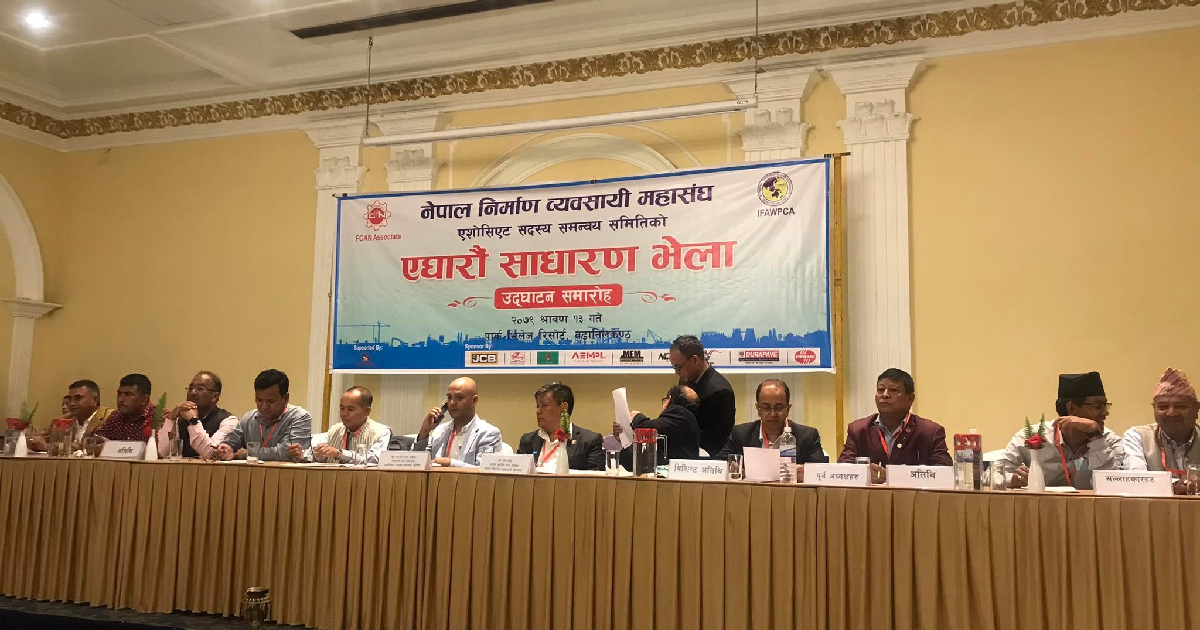
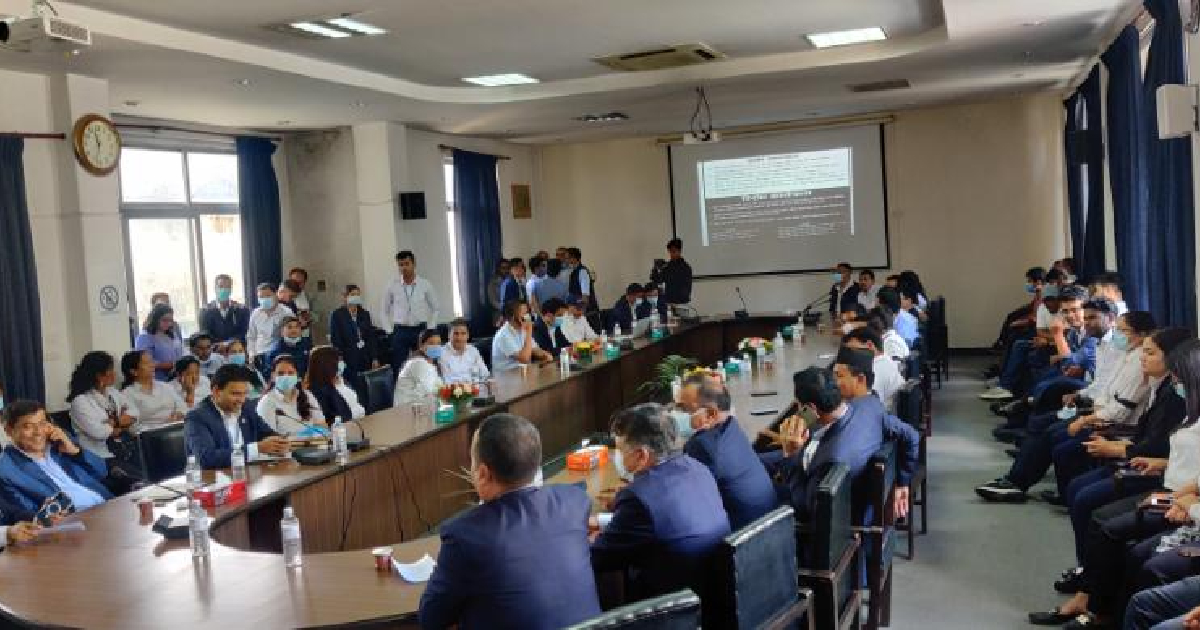

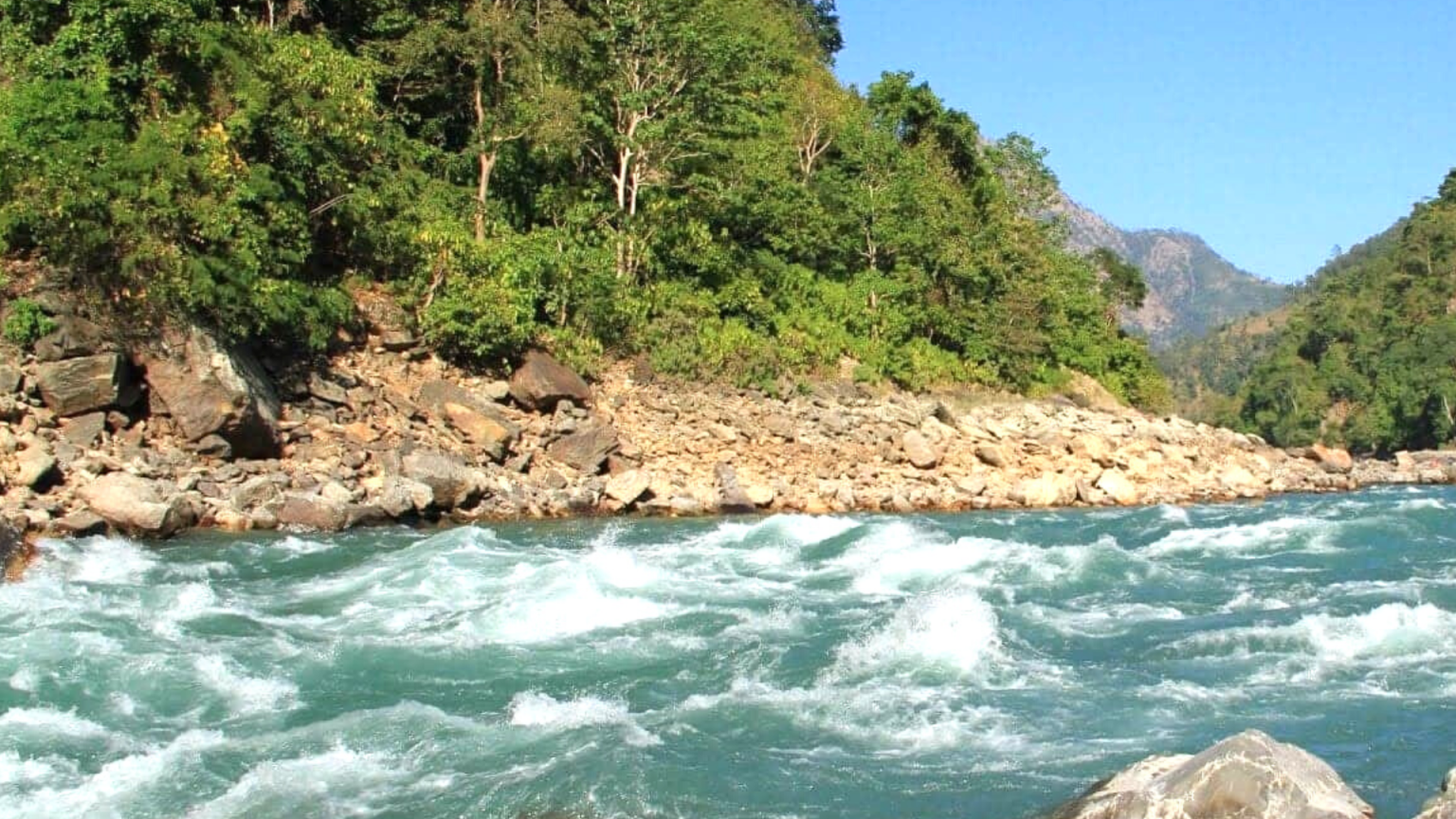

One Comment
buying cialis online
buying cialis online